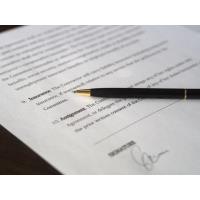Stamp Duty Land Tax Series - Exploring your potential stamp duty refund further
So far in this series I have explained the basics of what stamp duty land tax (SDLT) is and why it exists. Effective 1st April 2021 a second 2% surcharge has been added to purchases where the new owner lives outside the UK. This is in addition to the 3% surcharge levied on properties which are not the purchasers principle primary residence.
The 37 reliefs were originally introduced to account for exceptions to aspects of properties where the calculation is unfair or clearly should not relate to all facets of the purchase. For example if there are any commercial buildings on the land they clearly do not relate to a private dwelling and a relief can be claimed for these. Should the land area exceed 1.2 acres the excess land once again does not directly relate to the house as a home. How can your garden be several acres?
Similarly where there is a right of way across the land you own there is a relief to be claimed. This can relate to shared driveways or pathways across your land for a neighbour to reach their property. Once again under these circumstances a relief can be claimed.
We had a client who purchased a condominium unit in central London for £4.8m. The stamp duty paid was circa £400,000. We managed to achieve a refund to the client of £148,000. Whilst we understand that these are significant number it demonstrates to us that the opportunity to genuine tax refunds actually exists.
In another ongoing case our client was South African and secured a new job in London. She purchased a property in London and was told that she was to pay the additional 3% surcharge because the London property was not her principle primary residence. She went ahead with the purchase and we have advised her that if she sells her property in South Africa within three years of the purchase of the new house in London she can reclaim the 3% she paid on the London property. However, she must demonstrate that the house in South Africa was her principle primary residence and the house in London has since become her principle primary residence.
Perhaps readers will see just how complex these regulations can get in their application and administration.
Staying with the 3% surcharge if a couple purchase a property and one partner already owns a property the 3% surcharge will be applied to the entire purchase price. Similarly the lower SDLT rate for first time buyers will not apply if one of the partners is not a first time buyer. Sometimes the unfairness seems apparent but there are exceptions and reliefs which can be claimed which occasionally balance those evident penalties. However the rule is generally that SDLT will apply at the highest level for most transactions.
In another case a building was purchased for £10.5m consisting of seven individual dwellings. The conveyancing solicitor calculated the SDLT on each unit being oblivious to the rule that if more than six units are purchased in a single transaction the entire purchase is calculated on a single property basis. Thus from the £1.6 million SDLT which was calculated and paid a refund of £1.17 was successfully claimed.
If you have purchased a property in the last fours years and have overpaid the SDLT you may claim a refund from HMRC. But how do you know you have overpaid the SDLT? Contact me to discuss the possibility and I can then offer you a free review of the circumstances and SDLT paid with an assessment of any refund due before you decide to go any further.
-
Andrew Wood Managing Director
- April 01, 2021
- 0779 569 2645
- Send Email


